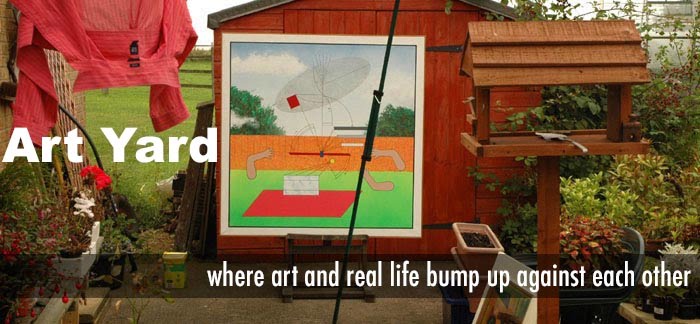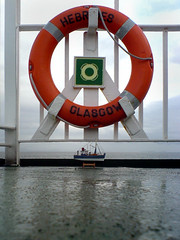Looking back
(as you do) I'm struck by how many of my ideas started out as thumbnail sketches on the backs of envelopes. This Summer's main project was no exception ...

It represented a convergence of need and interest in a very satisfying way. The background is my wish to have a better understanding of the topographical contexts of abandoned structures and archaeological sites in the Hebridean Islands. Simple rectilinear aerial photographs could provide a useful addition to measured surveys, such as those I made on Scarp, off the West coast of Harris. Anyway, doing kite stuff is fun! I've still got fond memories of the home-made kites the kids and I used to fly off the side of Pendle Hill in our Lancashire days.
The catalyst that set the project in motion was an unplanned encounter with a kite festival at Calke Abbey, Derbyshire back in April. Beneath a rainbow-decorated sky the irresistable lure of
The Highwaymen stand drew me in and resulted in me going home with spools of kite line and a very temptacious price list.
There is a seemingly infinite amount of information on kite-based photography (generally called KAP by its practitioners) on the Web, much of which is anecdotal, like this blog post.
The best-known and probably most comprehensive website on the subject is
Cris Benton's KAP site. As well as this, there's an inspirational video of him on
Vimeo or Make:Magazine's mind-boggling
Make:television channel (Episode 2). It's a good showcase for the creative potential of KAP.
Other names crop up repeatedly when researching KAP online, such as
Brooks Leffler (maker of Brooxes rigs) and
James Gentles (maker of gentLED electronic triggers, etc.).
The KAP Shop, in the Netherlands, seems to be the main European supplier of KAP-related bits and pieces.
Typical of other useful sites are
KAP, How to do it, and
KAP. There are also academic sites and papers related to the subject, such as
the University of Vienna's Aerial Archive and
a pdf'd conference paper on unmanned small-format aerial photography.
My own ambitions at this stage are fairly modest. To hang a camera from the sky and take pictures of any sort would count for me as an achievement.
The simplest way to take vertical shots seemed to be to pack the kit in a small box that I could hang from a kite line. I had worked out that a box about 3" deep (75mm) and 6" square (150mm) internally would hold most cameras and other components.
I considered doing away with the Picavet cross suspension system and screwing the suspension rings directly into the box itself. However, I realised that a cross would allow me to rotate the box relative to both the direction of the kite line and the main axes of objects on the ground below. To construct the box, I used basswood comb-jointed at the corners for its combination of lightness and strength. Full-size pattern drawings were made to ensure that the pieces would all fit together.
 There are more pictures showing
the building of the rig on Flickr.
There are more pictures showing
the building of the rig on Flickr.
For the radio-control components,
Phils Models in Sleaford provided everything I needed along with plenty of free advice.
At this stage in this project, to have gone out and bought a new digital camera would have been a reckless extravagance. Cousin Rex's expeditions to car-boot sales provided me with three obsolete but serviceable digital cameras (of about two-megapixel resolution) that could, if necessary, be tested to destruction.

The rig, finally finished, painted and varnished went with me on my second visit of the Summer to North Uist, in the Outer Hebrides. I'm pleased to say that in spite of the battering it took, it came back in good condition. A selection of images from my trip are in
my Flickr photostream. Needless to say, there were lots of steeply-learned lessons for me to work on in time for a much more productive visit in 2010.
















































